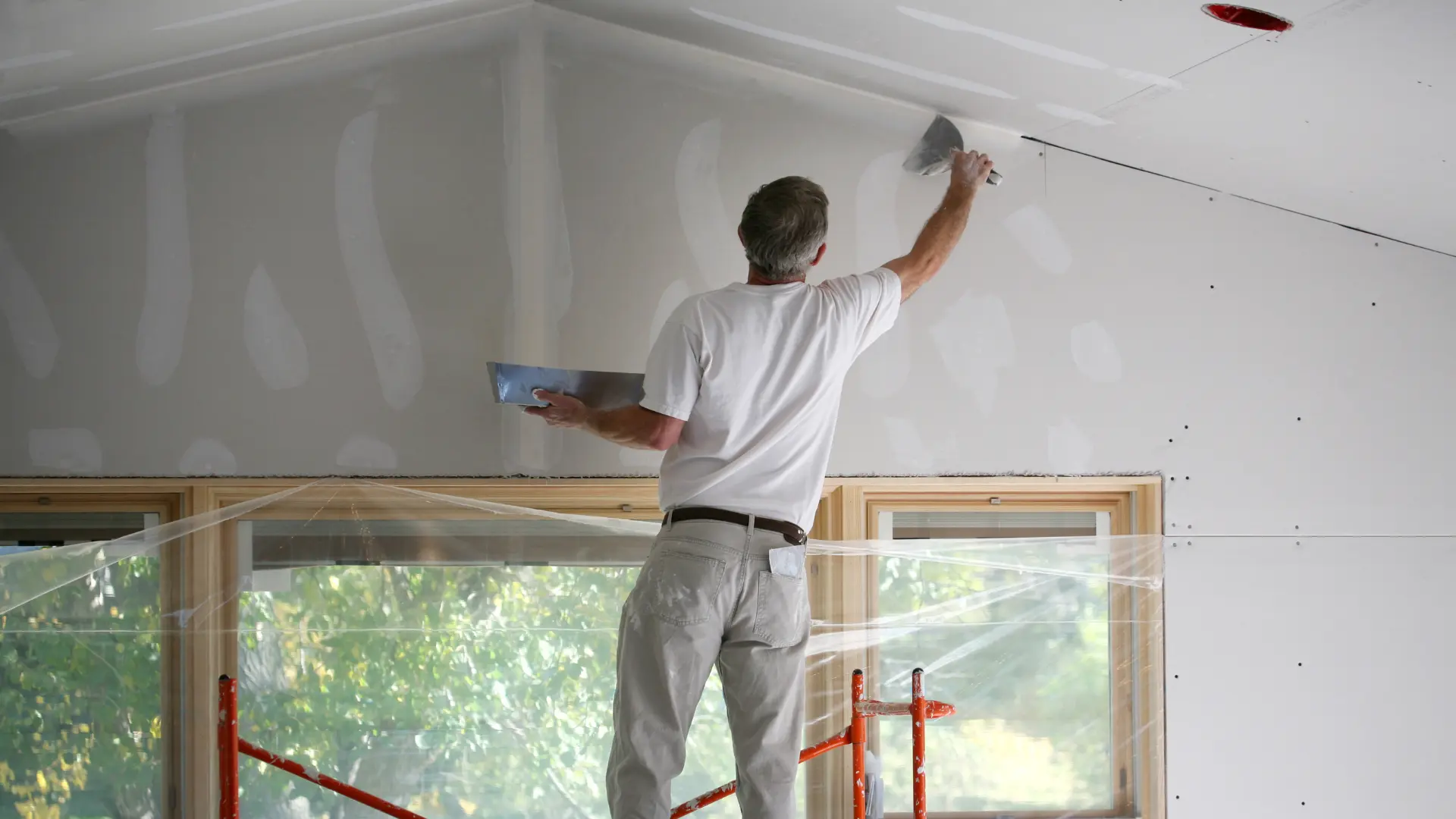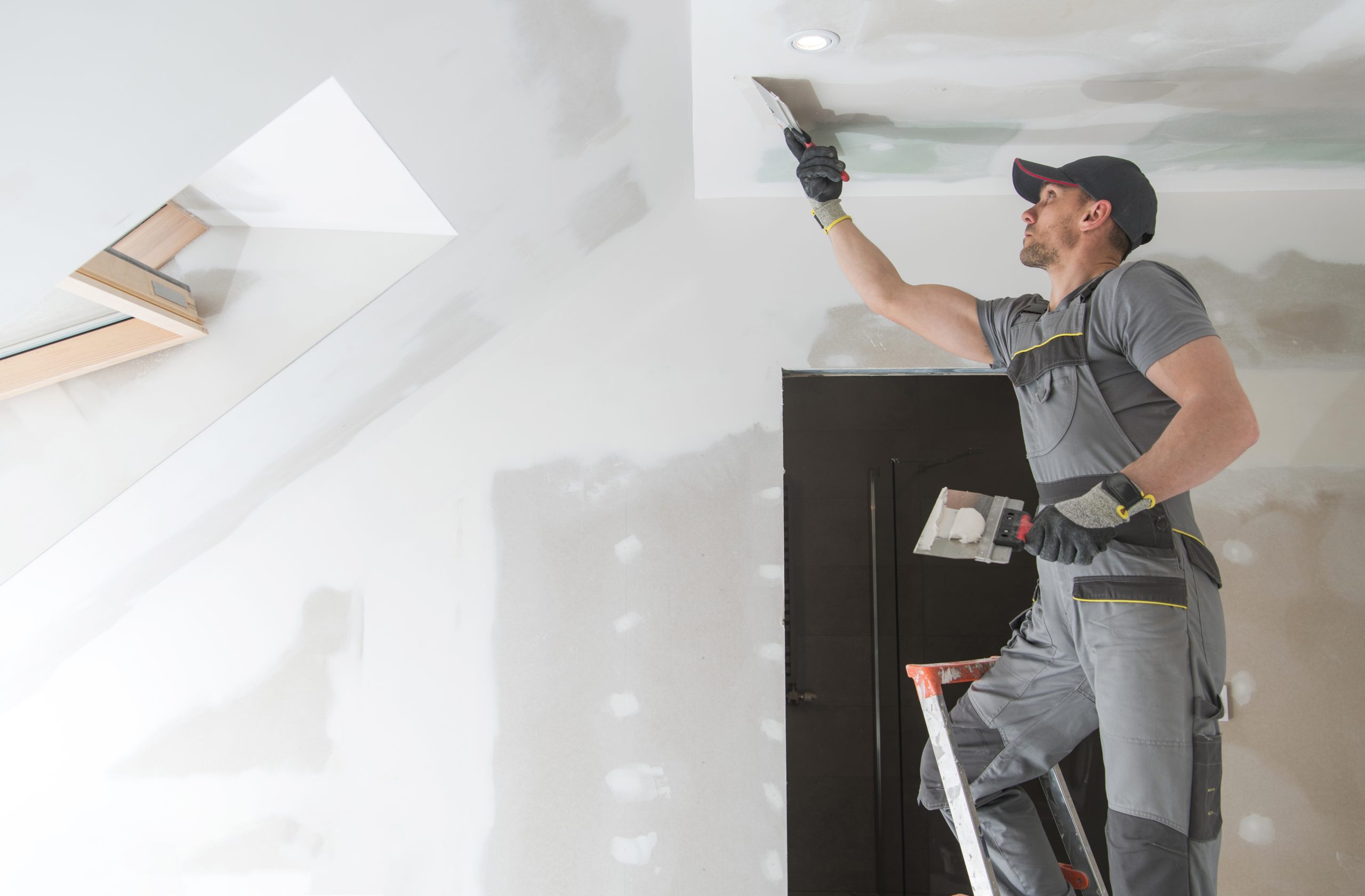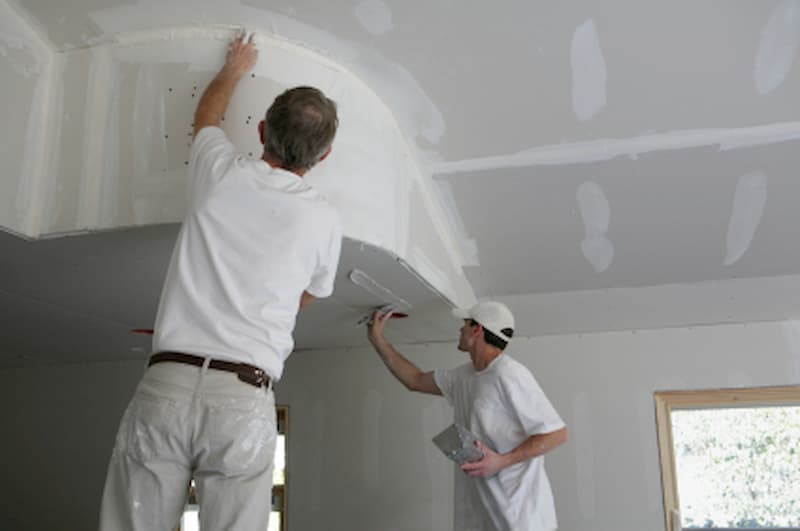Work with drywall contractors who prioritize top-quality Interior Painting that stands out.
Discover the very best Practices for Effective Drywall Repair Work and Installation
The art of drywall fixing and installment calls for a mix of skill and precision. Understanding the necessary devices is essential for accomplishing a seamless coating. Comprehending the detailed procedure can make a significant difference in the outcome. Correct strategies for taping and mudding are additionally crucial. What continues to be is the understanding of upkeep that ensures long life. These components with each other create a sleek end result worth checking out additionally.

Crucial Devices for Drywall Repair and Installment
When embarking on drywall repair and setup, having the right devices can substantially enhance the effectiveness and quality of the work. An utility blade is important for cutting drywall sheets specifically, while a drywall saw can help in making a lot more detailed cuts. Taping blades, available in various dimensions, are essential for applying joint compound efficiently and equally. A drywall sander, ideally with a dirt collection function, aids achieve a polished finish, lowering the requirement for extensive clean-up.
Furthermore, a gauging tape guarantees exact measurements, and a degree ensures that setups are straight and plumb. Safety and security gear, including dust masks and safety glasses, must not be forgotten to shield versus debris and dust. Ultimately, a stud finder aids in locating framing participants, assuring secure installation. By furnishing oneself with these important devices, the repair service and installation process becomes extra manageable and causes a professional-quality end result.

Step-by-Step Overview to Patching Holes
Patching holes in drywall needs a methodical technique to ensure a smooth fixing. The area around the opening have to be cleaned up and any kind of loose particles removed. For tiny openings, a putty blade can be used to apply a lightweight spackle, pressing it into the opening and smoothing the surface. After it dries, fining sand is vital to develop a flat coating. For bigger openings, a spot of drywall might be essential. This entails reducing an item of drywall somewhat bigger than the hole, protecting it to the wall surface with screws, and utilizing joint substance to cover the joints. As soon as the substance dries out, it must be sanded smooth. Topping the patched area before painting will assure an also coating. Following these actions will certainly lead to a professional-looking repair that mixes effortlessly with the surrounding wall.
Strategies for Seamless Drywall Setup
Achieving smooth drywall installation demands cautious preparation and execution. It is important to measure and cut drywall sheets precisely to lessen gaps. Making use of an energy blade, installers ought to rack up the board before breaking it along the cut line, ensuring tidy edges. Correctly aligning the sheets is vital; beginning from the top and working down assists preserve uniformity.
Attaching drywall to the studs needs consistent spacing, usually every 16 inches, making use of screws as opposed to nails for better hold. This method decreases the threat of pops gradually. In addition, startling the seams in between sheets enhances structural integrity and reduces the visibility of joints.
Lastly, using the appropriate density of drywall for certain locations-- such as moisture-resistant enters restrooms-- more contributes to a perfect surface. Following these strategies will result in a smooth and professional-looking installment, establishing the phase for the succeeding ending up processes.
Completing Touches: Insulation and Mudding
Ending up touches, such as mudding and taping, play an important role in achieving a sleek drywall surface area. Insulation involves using a slim strip of drywall tape over the joints and seams, making certain a seamless look. This process assists avoid fractures and produces a strong bond between drywall sheets. It is crucial to pick the right sort of tape, with paper and fiberglass harmonize being the most typical choices.
Mudding, or applying joint compound, complies with insulation. This substance loads in spaces and smooths out the surface area for an uniform coating. It is generally used in numerous layers, with each coat requiring to dry before fining sand. Proper technique entails feathering the sides to blend the substance into the bordering drywall, lessening presence.
When finished correctly, taping and mudding enhance both the aesthetic and structural integrity of the drywall installment, leading to a professional-quality finish.
Tips for Maintaining Your Drywall After Installation

Additionally, preserving a regular interior humidity level can prevent bending or mold and mildew development. Using a dehumidifier in wet locations, like cellars, is suggested. It's also advantageous to occasionally paint locations that show wear, as this protects the underlying material. Ultimately, when moving furnishings or setting up components, care needs to be exercised to stay clear of harming the drywall. By adhering to these maintenance tips, homeowners can prolong the life of their drywall, safeguarding it continues to be an eye-catching attribute of their insides.
Often Asked Inquiries
What Safety Equipment Is Essential for Drywall Fixing and Installment?
For drywall repair service and installation, vital safety and security gear consists of safety goggles to safeguard eyes, dust masks to avoid visit this website inhalation of fragments, handwear covers for hand security, and knee pads for comfort during long term kneeling. Interior Painting.
Just how Do I Establish the Drywall Density Needed for My Task?
To establish the drywall thickness needed for a job, one must consider the wall surface's structural needs, regional building regulations, and the planned use the room, generally selecting 5/8-inch or 1/2-inch drywall.
Can I Fix Drywall Without Removing Furniture From the Space?
Yes, drywall can be fixed without helpful resources eliminating furnishings from the room. Careful planning and protective actions can decrease mess, permitting effective repairs while maintaining surrounding items risk-free from dust and damages throughout the procedure.
What Kinds of Drywall Are Finest for Different Environments?
Moisture-resistant drywall is excellent for bathrooms and kitchen areas, while soundproof drywall suits shared walls in apartment or condos. Fire-rated drywall is best for garages, and common drywall functions well in general living areas, ensuring resilience and suitability for different atmospheres.
Just how Lengthy Does It Take for Drywall Mud to Dry Entirely?
Drywall mud normally takes 24 to 2 days to dry totally, depending upon variables like moisture and temperature level (Interior Painting). Thicker applications may call for longer drying times, while thinner layers can dry out quicker. Appropriate air flow help drying out
The art of drywall repair work and installment requires a mix of ability and accuracy. When taking on drywall repair work and installation, having the right tools can considerably improve the effectiveness and high quality of the job. An energy blade is necessary for cutting drywall sheets specifically, while a drywall saw can help in making more complex cuts. Attaining smooth drywall setup demands careful preparation and implementation. Moisture-resistant drywall is perfect for kitchens and shower rooms, while directory soundproof drywall suits shared wall surfaces in apartments.